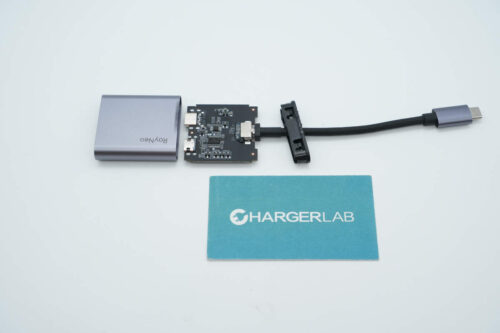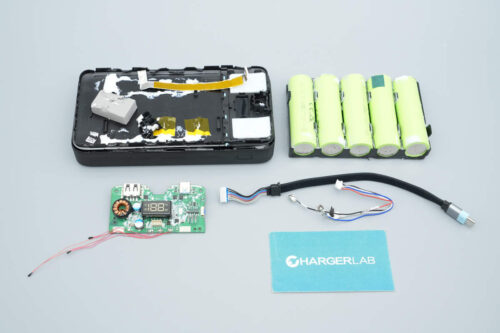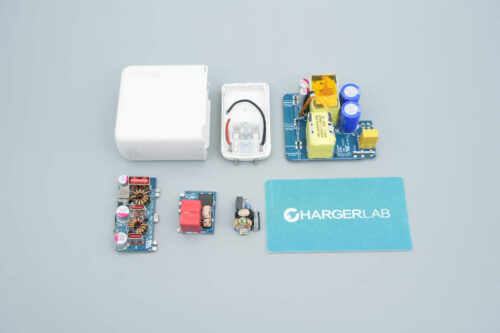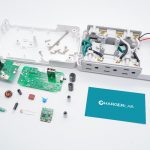Introduction
On May 27th, RayNeo released the Air 3s Pro glasses, featuring the 5.5th-generation dual-layer Micro-OLED display. With 98% DCI-P3 color gamut coverage and ΔE<2 color calibration, it ensures highly accurate color reproduction. The equivalent display size of 135 inches, combined with a 3D surround sound system, delivers an immersive "portable giant screen" experience, making it ideal for immersive video entertainment and gaming scenarios.
To address the power needs during extended viewing and casting sessions, RayNeo has specially designed a USB-C adapter that supports simultaneous charging and usage. This adapter comes with a built-in USB-C cable and is equipped with a 100W PD input port and a 4K60Hz video transmission port. It balances high-power charging capabilities with high-definition video transmission, all in a compact and portable design. Below, we take a closer look at the detailed design and materials of this adapter.
Product Appearance

The RayNeo Air 3s Pro kit includes, in addition to the glasses, a data cable, the USB-C adapter, a user manual, a service card, a portable glasses case, a carrying box, and a cleaning cloth.
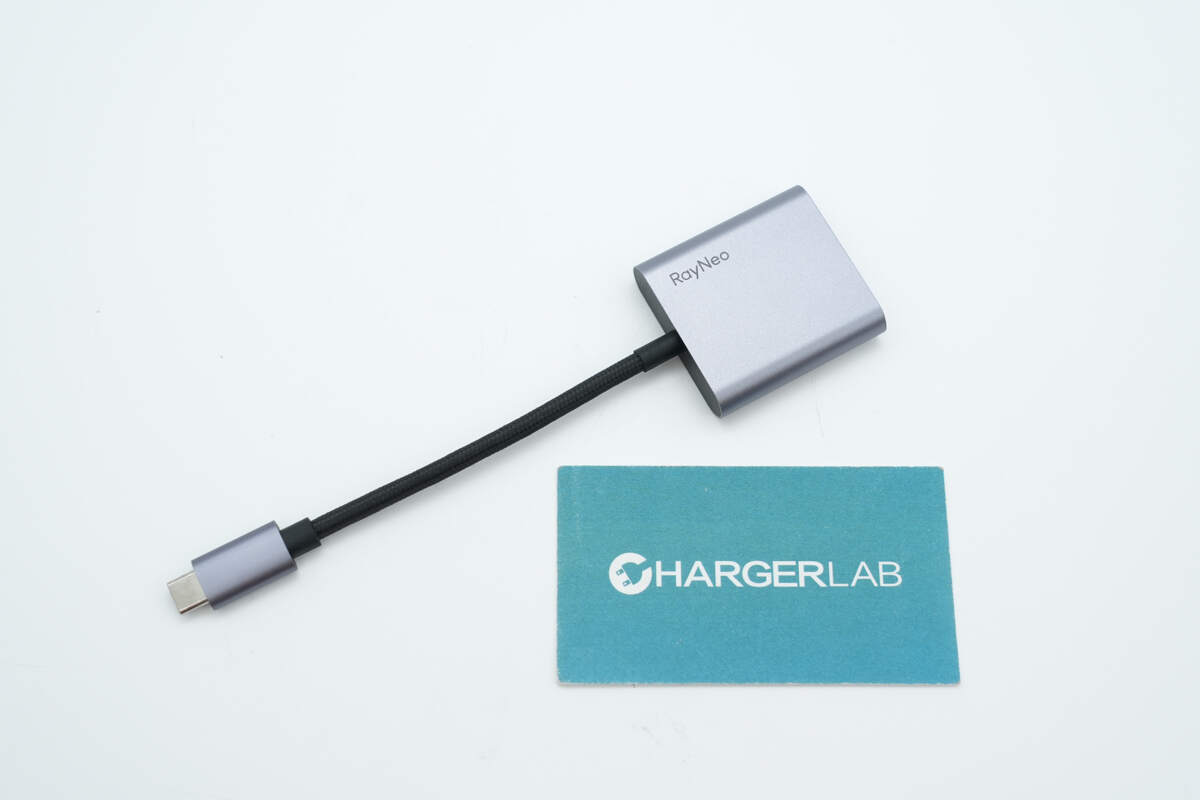
This adapter comes with a built-in USB-C cable. Both the connector and the casing are made of metal, with the surface coated in a silver-gray finish.
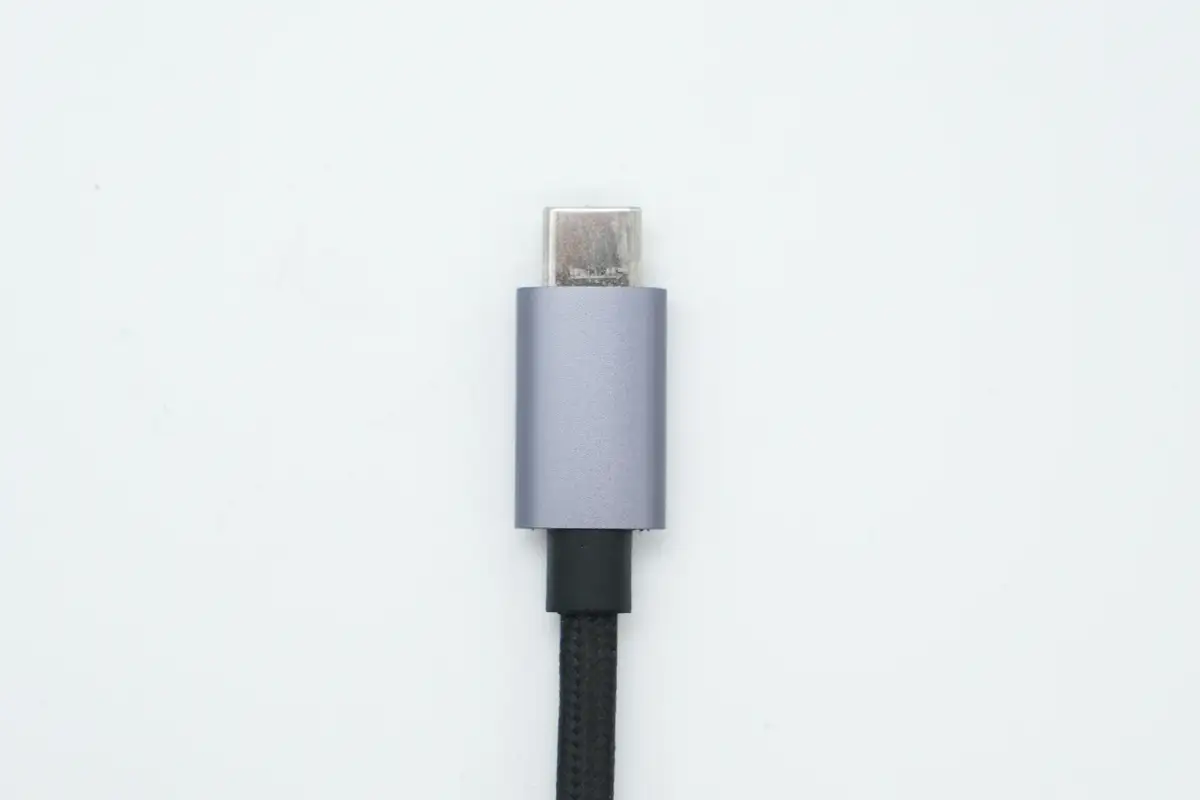
The USB-C connector end features a reinforced design to resist bending.
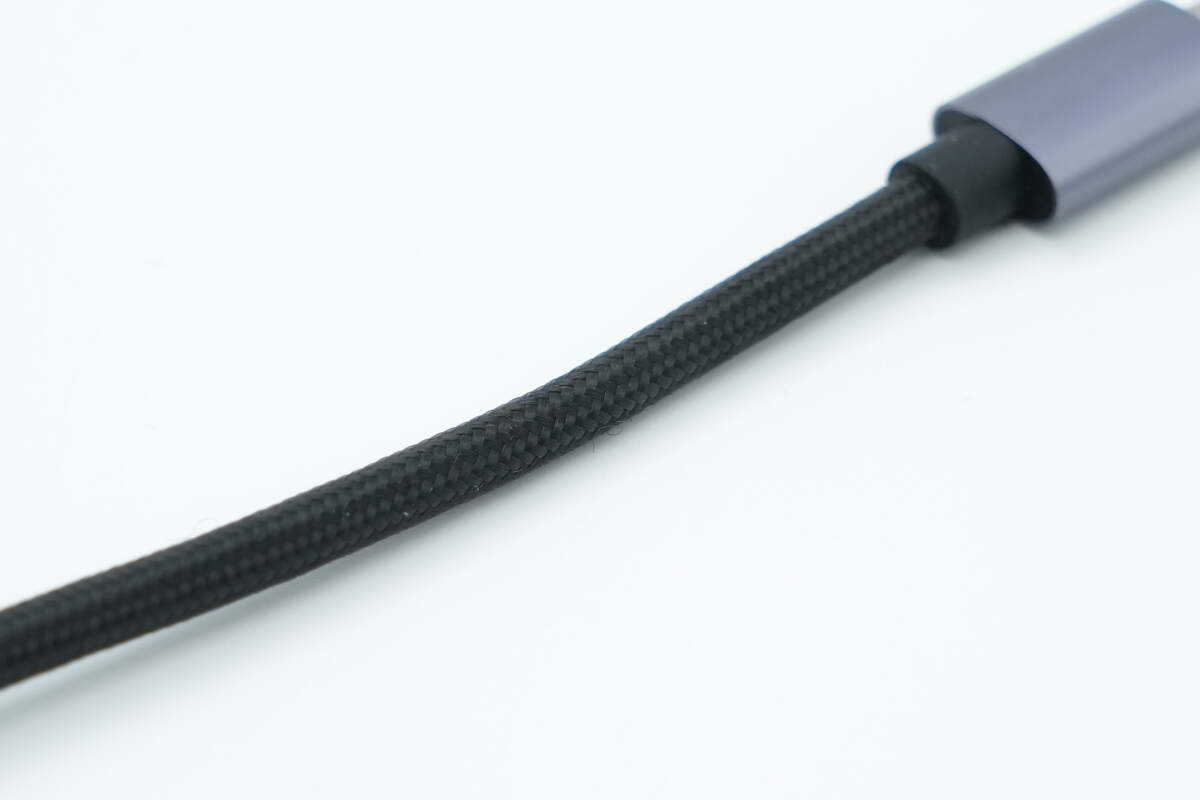
The cable is made of black braided material, which is wear-resistant, dirt-resistant, and highly durable.

The junction between the cable and the device body also features a reinforced bend-resistant design.
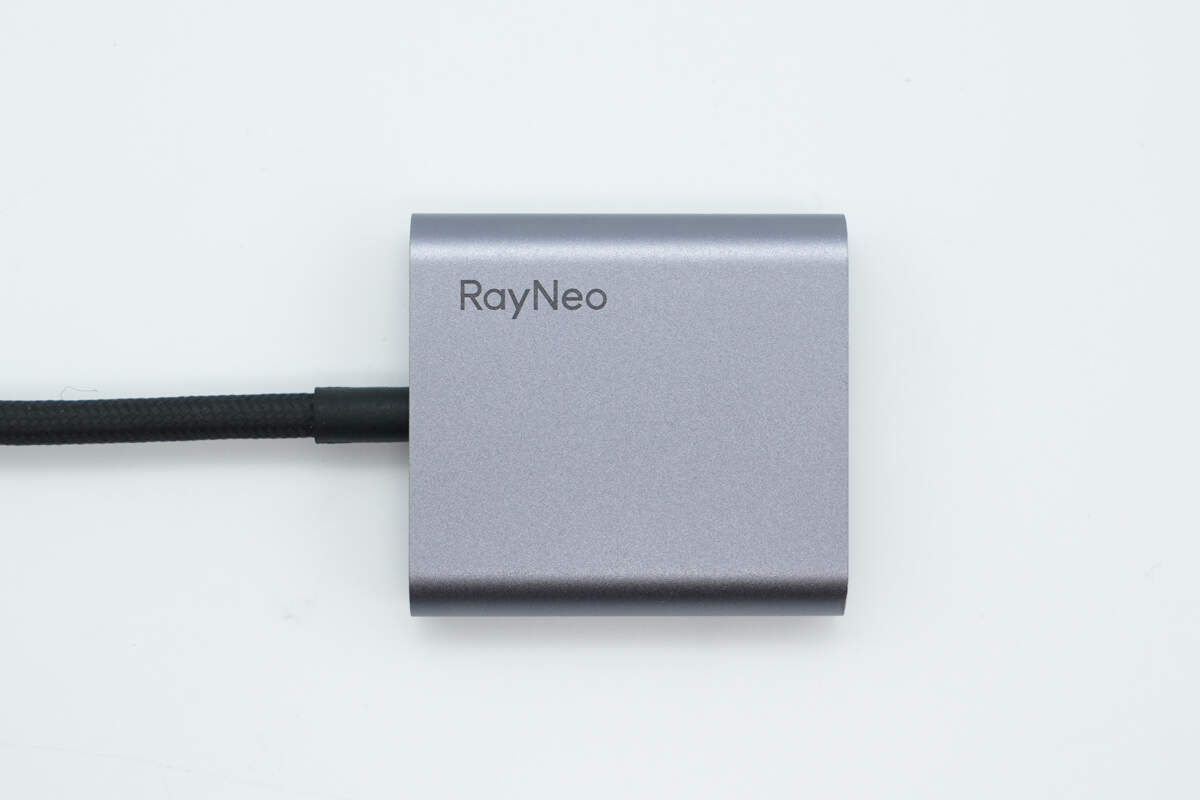
The RayNeo logo is located at the upper left corner on the front of the adapter.
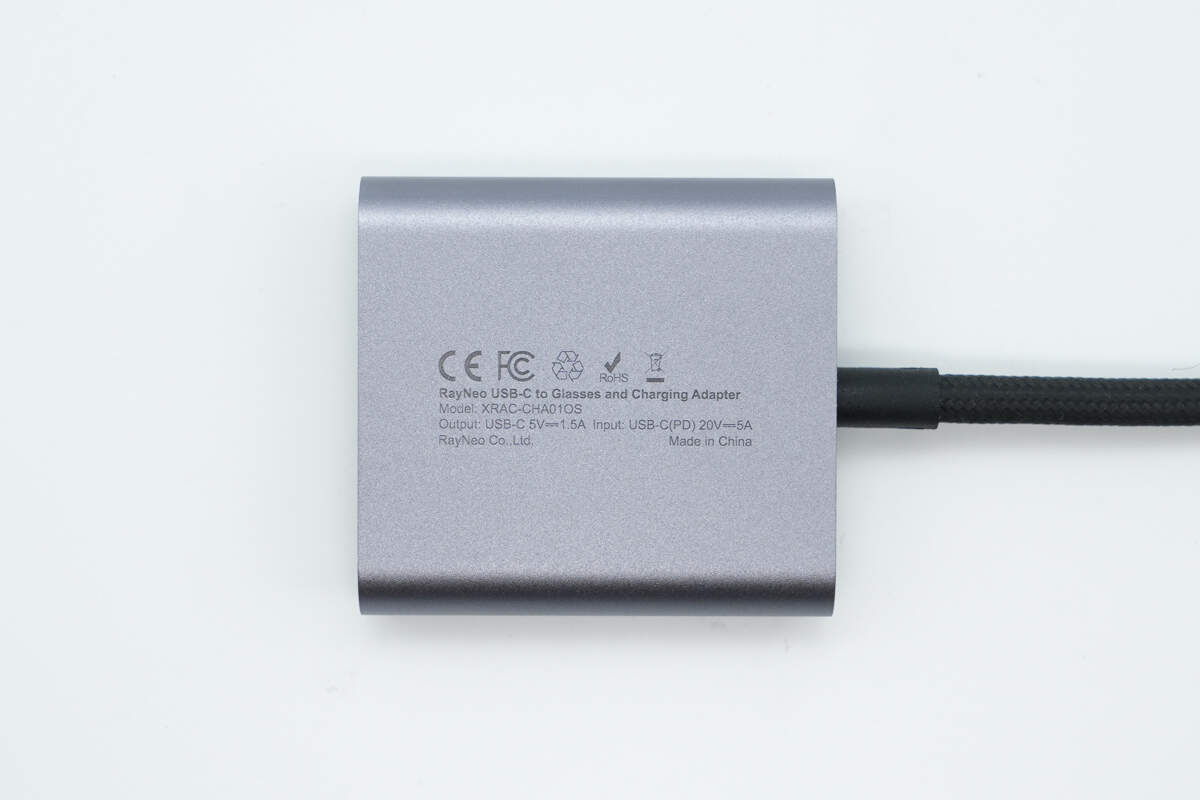
The back features laser-engraved technical specifications.
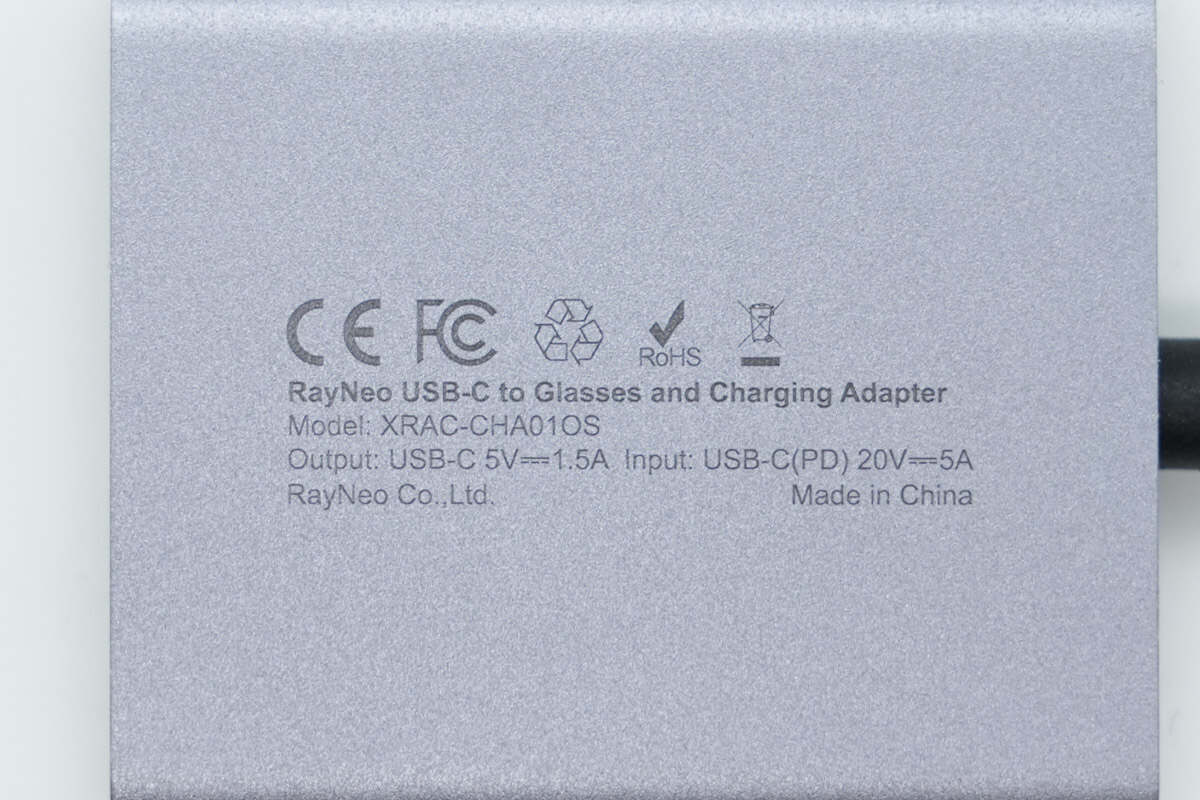
Model: XRAC-CHA01OS
USB-C (PD) Input: 20V 5A
USB-C Output: 5V 1.5A
It has passed CE and FCC certifications.
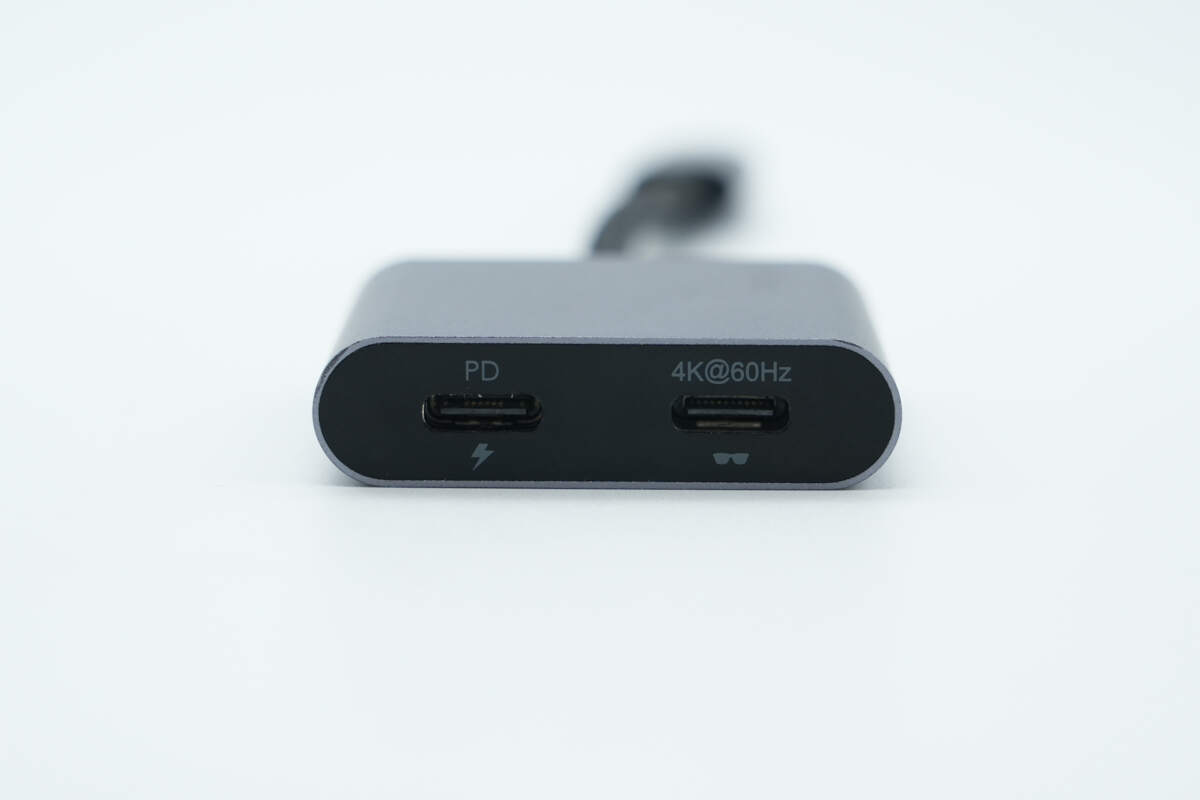
The other end features a USB-C PD input port and a USB-C video transmission port, which supports simultaneous 4K60Hz video transmission and 5V 1.5A power supply for the RayNeo Air 3s Pro.
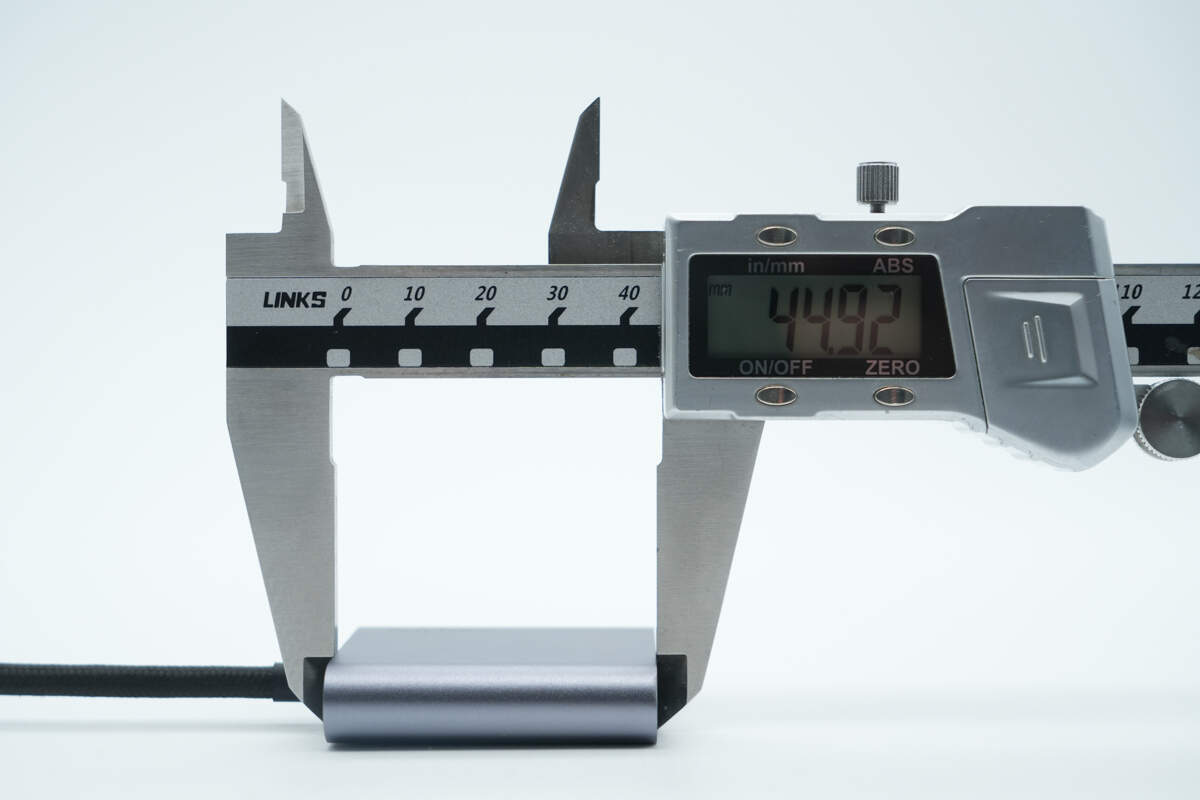
The length is about 44.92 mm (1.77 inches).
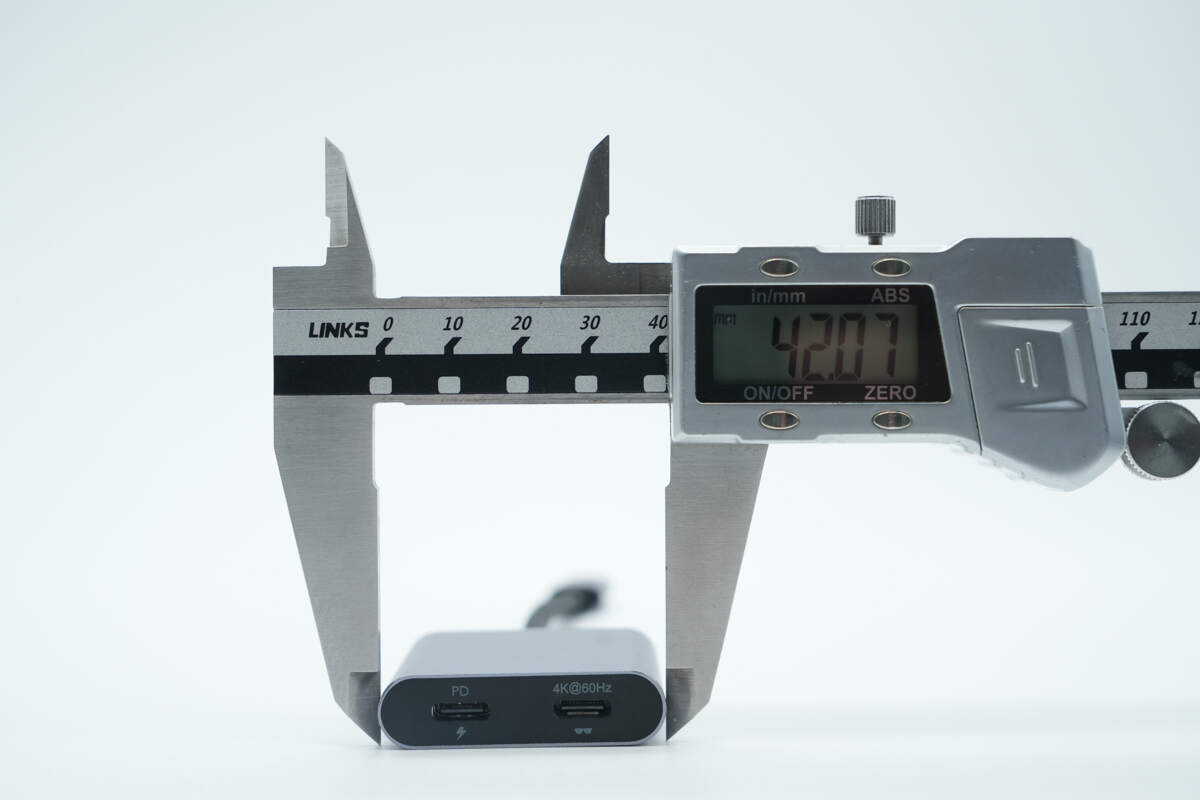
The width is about 42.07 mm (1.66 inches).
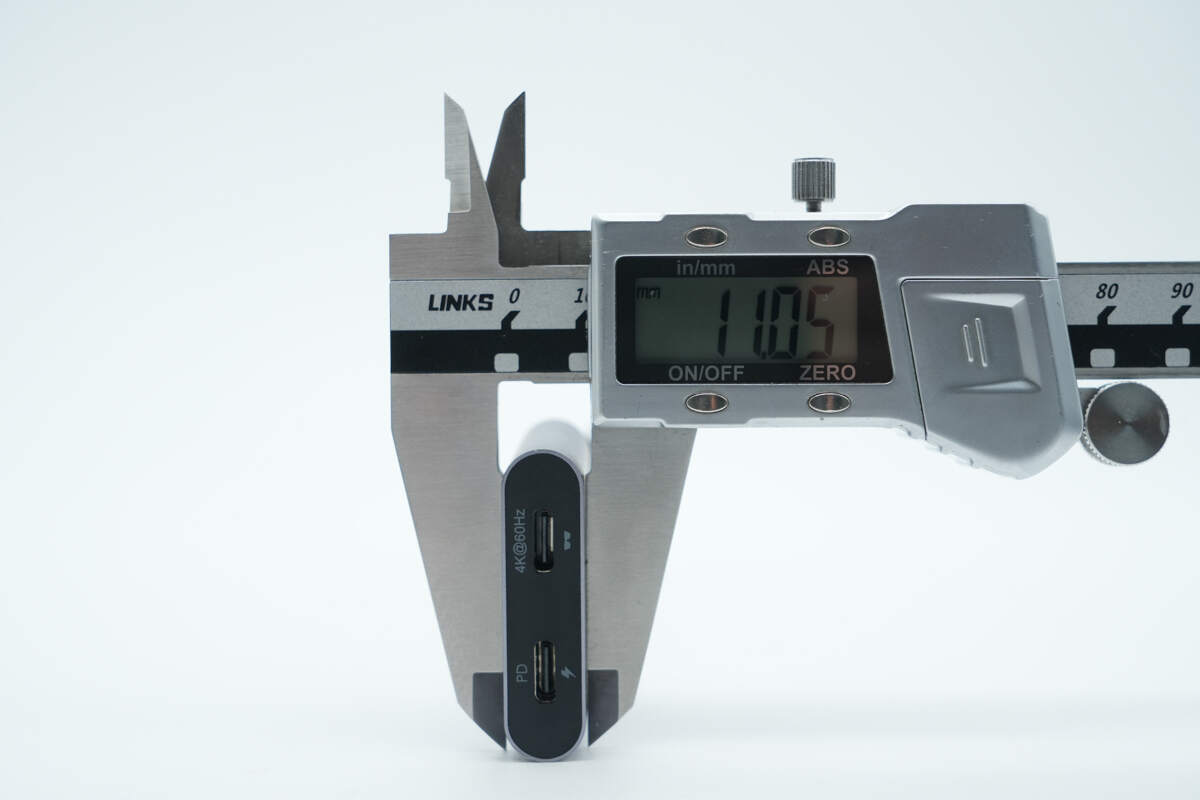
The thickness is about 11.05 mm (0.44 inches).
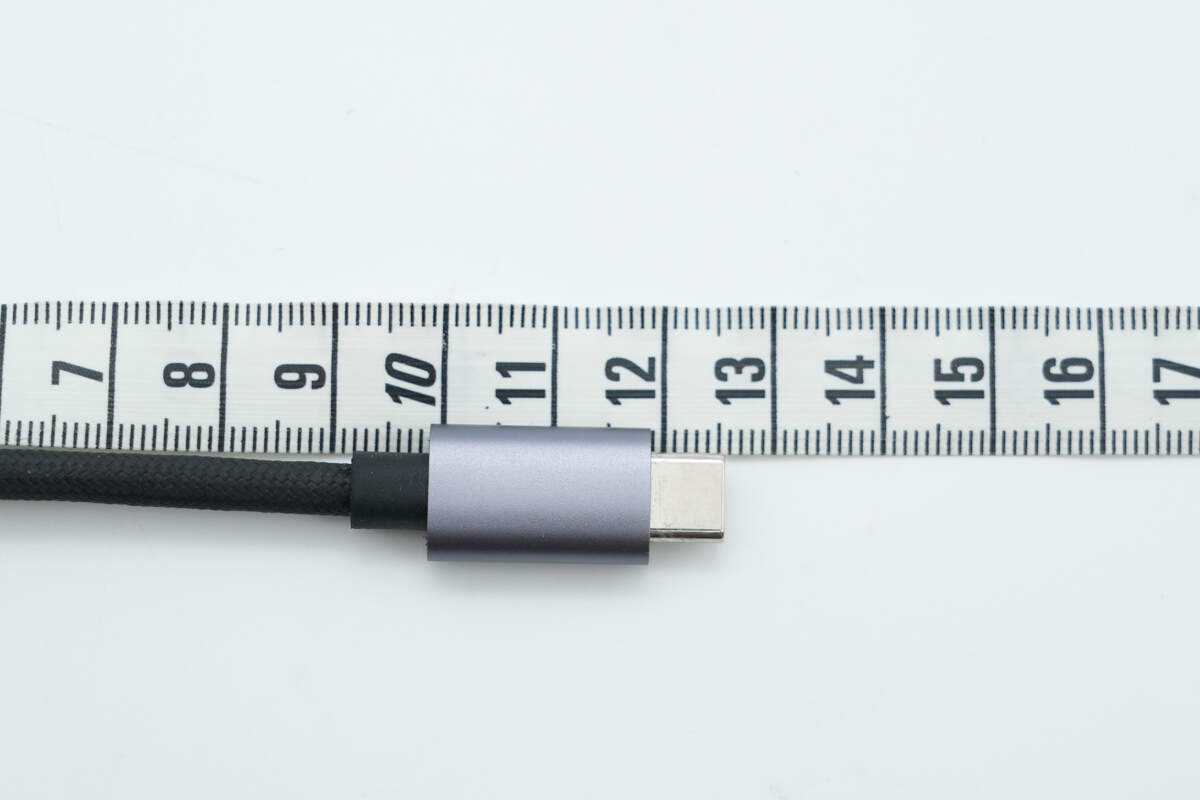
The length of the cable is about 12.5 cm (4.92 inches).
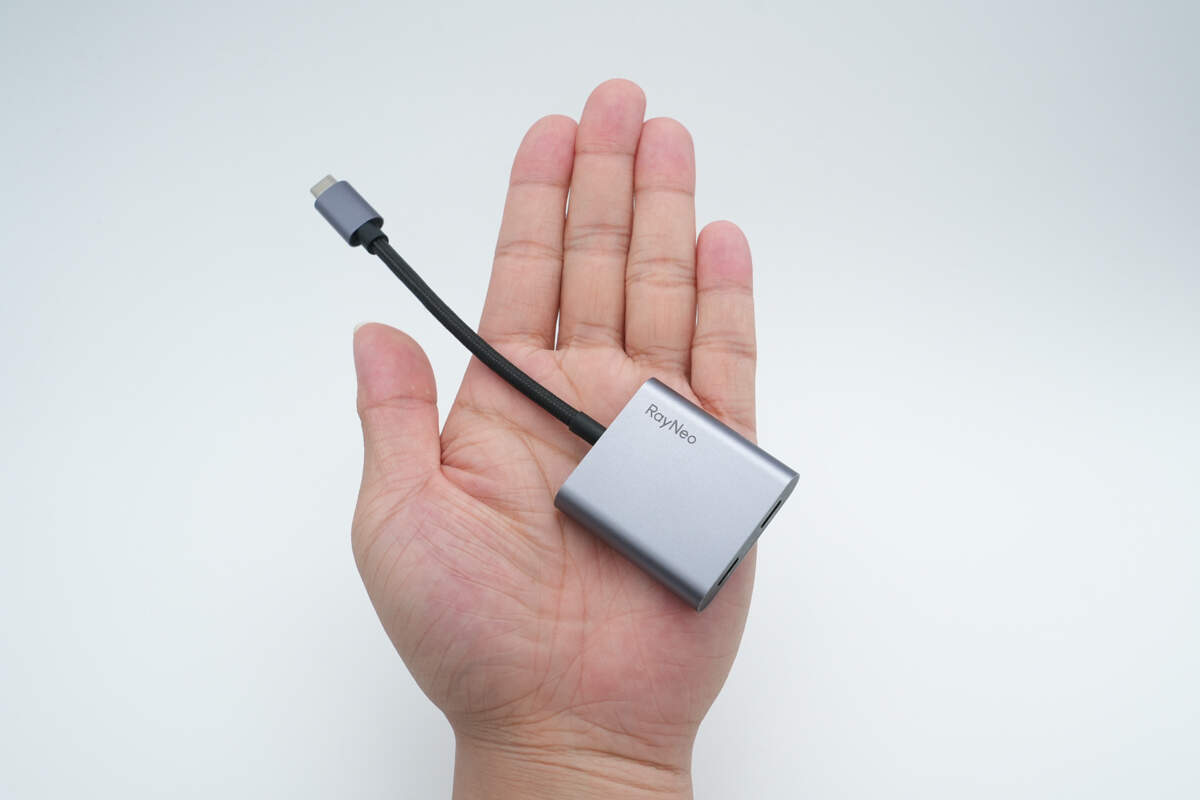
That's how big it is in the hand.
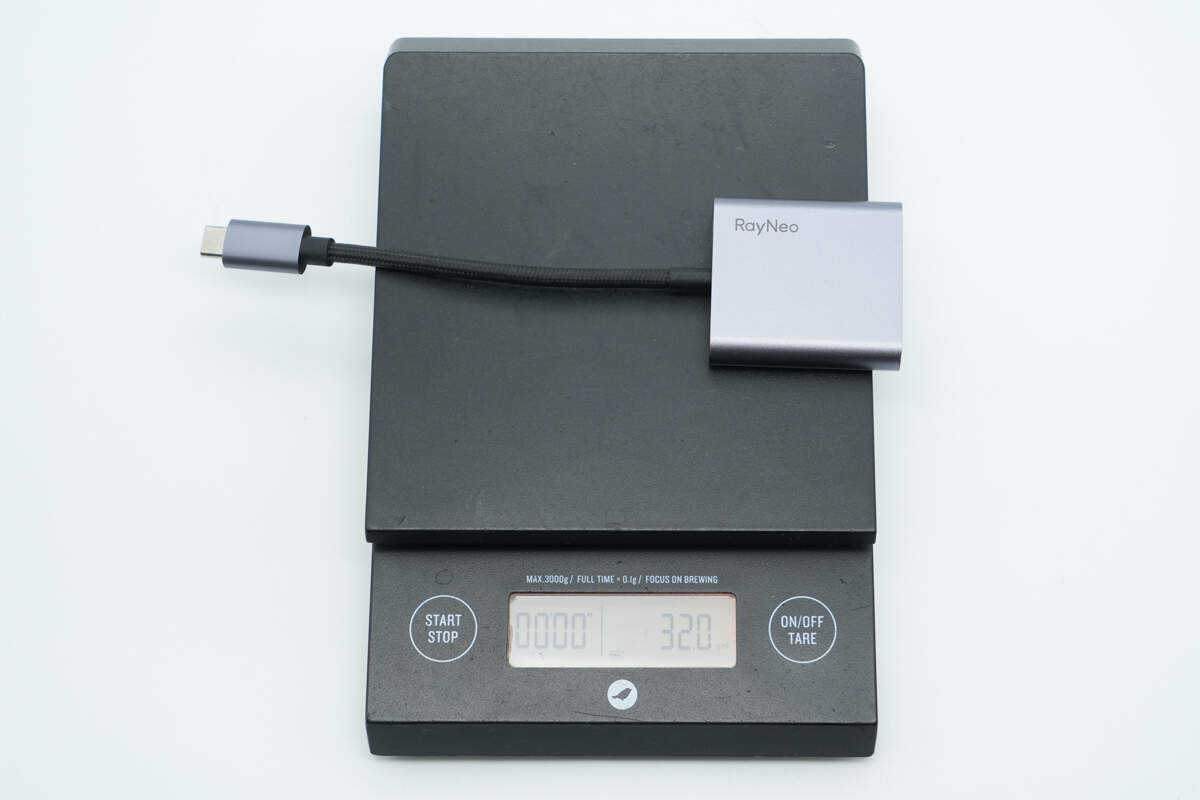
The weight is about 32 g (1.13 oz).
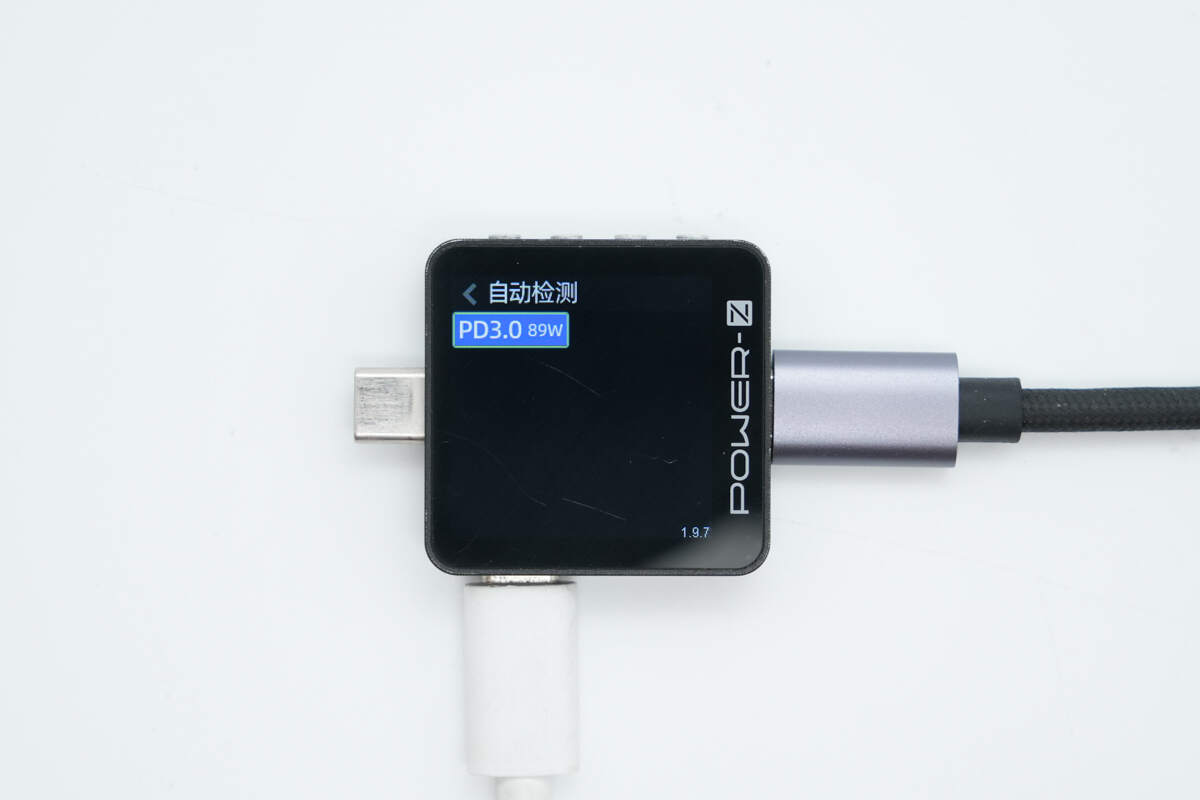
ChargerLAB POWER-Z KM003C shows that the USB-C cable supports PD3.0 charging protocol.
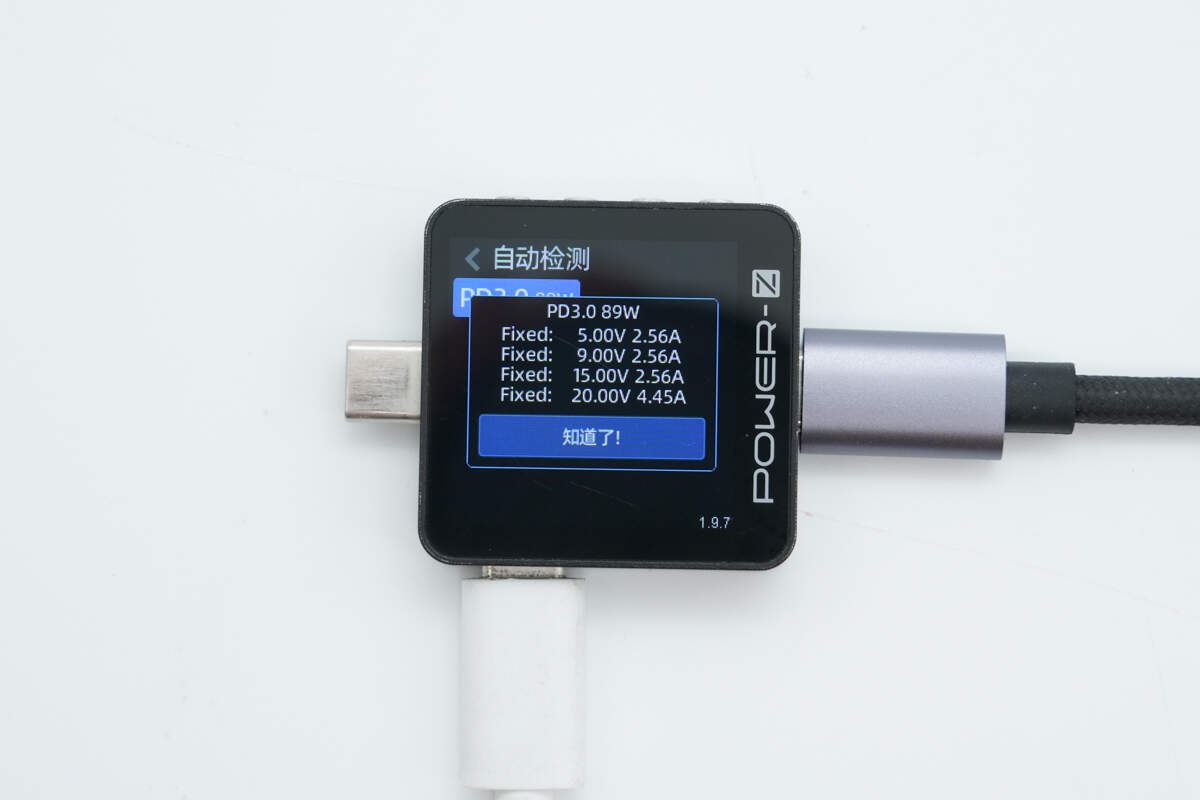
And it has four fixed PDOs of 5V2.56A, 9V2.56A, 15V2.56A, and 20V4.45A.
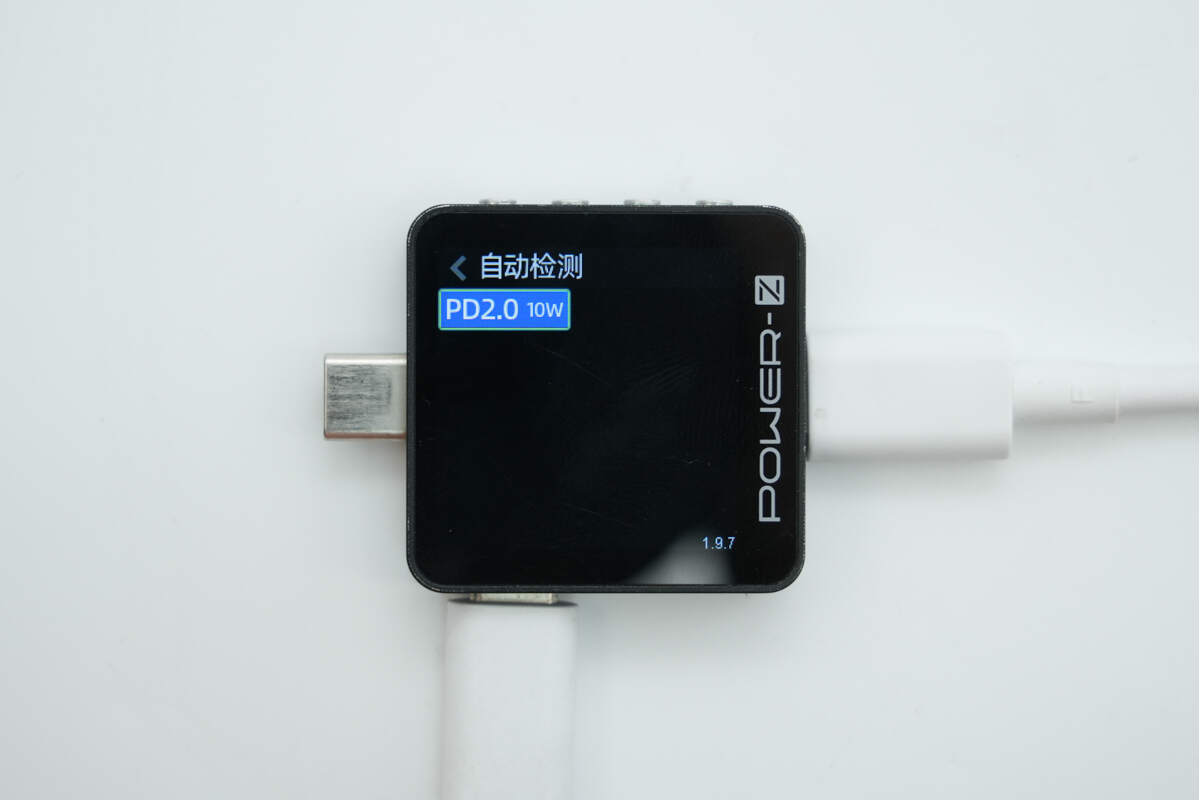
Testing shows that the USB-C video transmission port supports the PD 2.0 charging protocol.

And it has one fixed PDO, which is 5V2A.
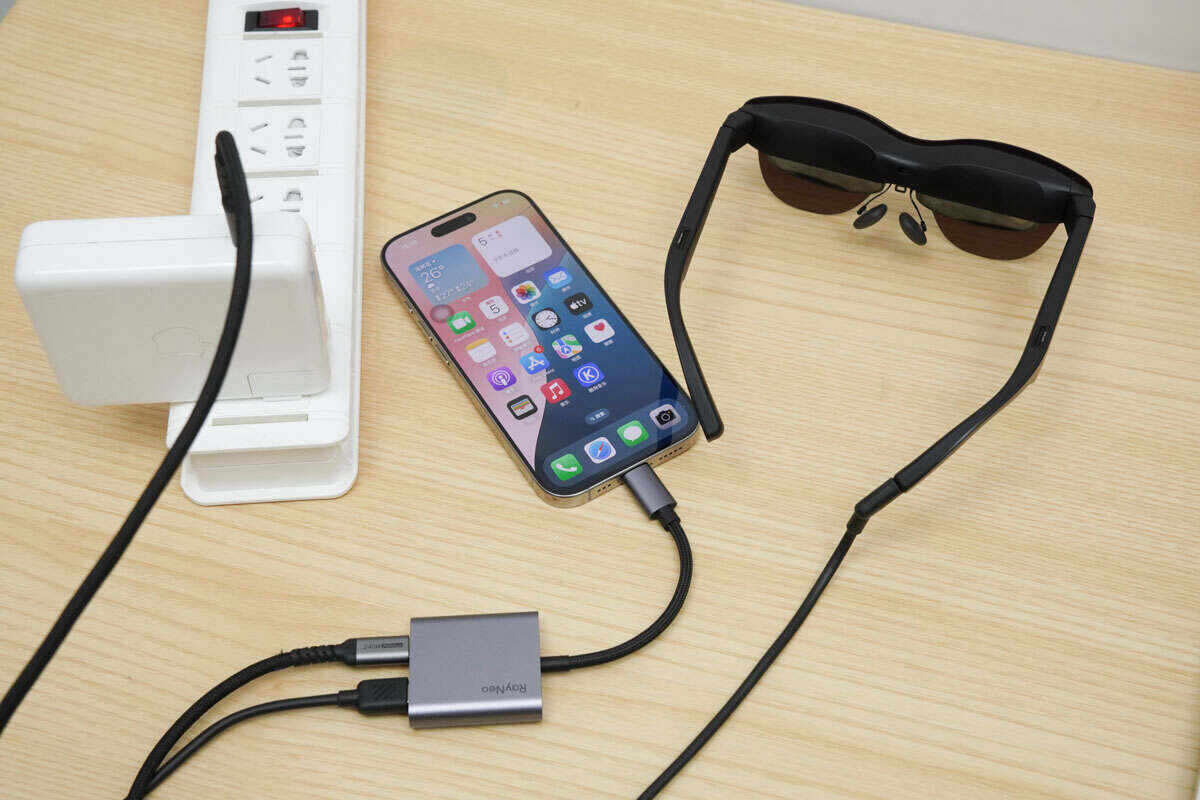
It is capable of simultaneously transmitting video to the RayNeo Air 3s Pro and providing power to both the iPhone 16 Pro Max and the glasses.
Teardown
Next, let's take it apart to see its internal components and structure.

Disassembled the case to remove the PCB. The bottom plastic shell is secured with snap-fit clips.
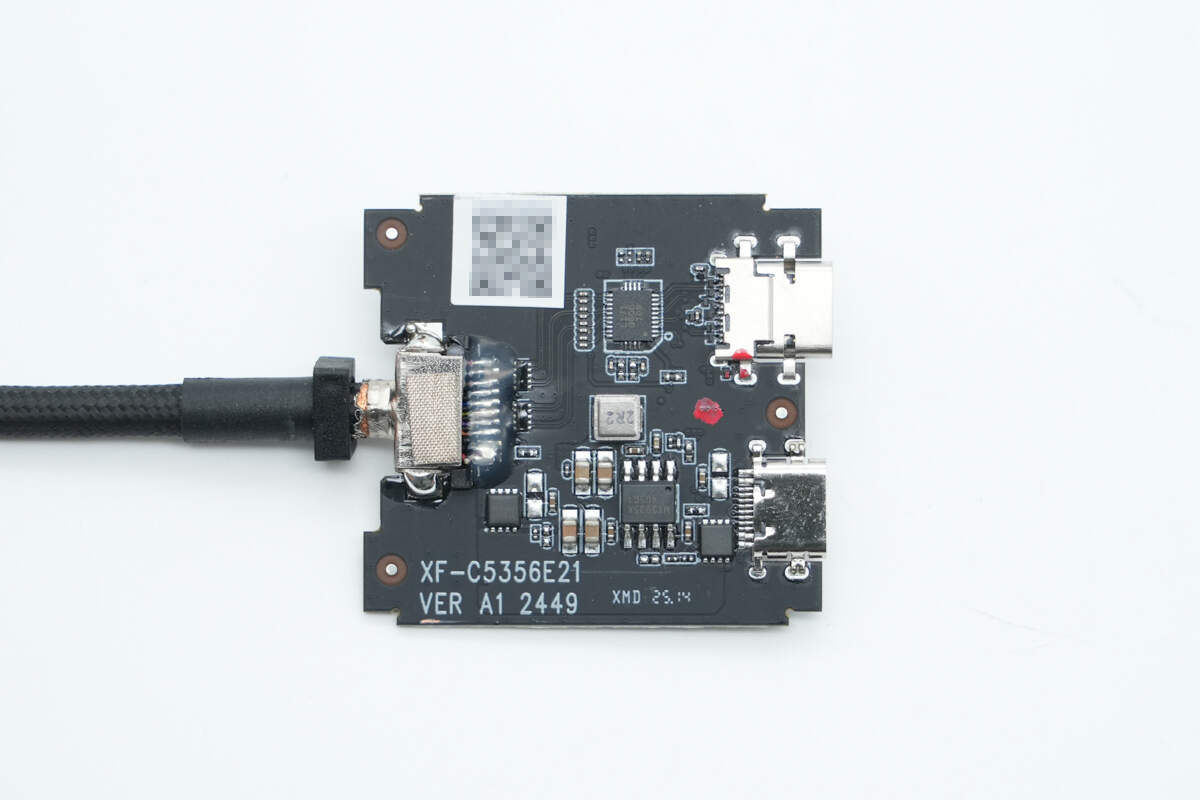
The wires are soldered to the PCB and clamped securely by a metal clip, which is lined with conductive fabric. The front side of the PCB features components such as VBUS MOSFETs, a synchronous buck converter, and a buck inductor.
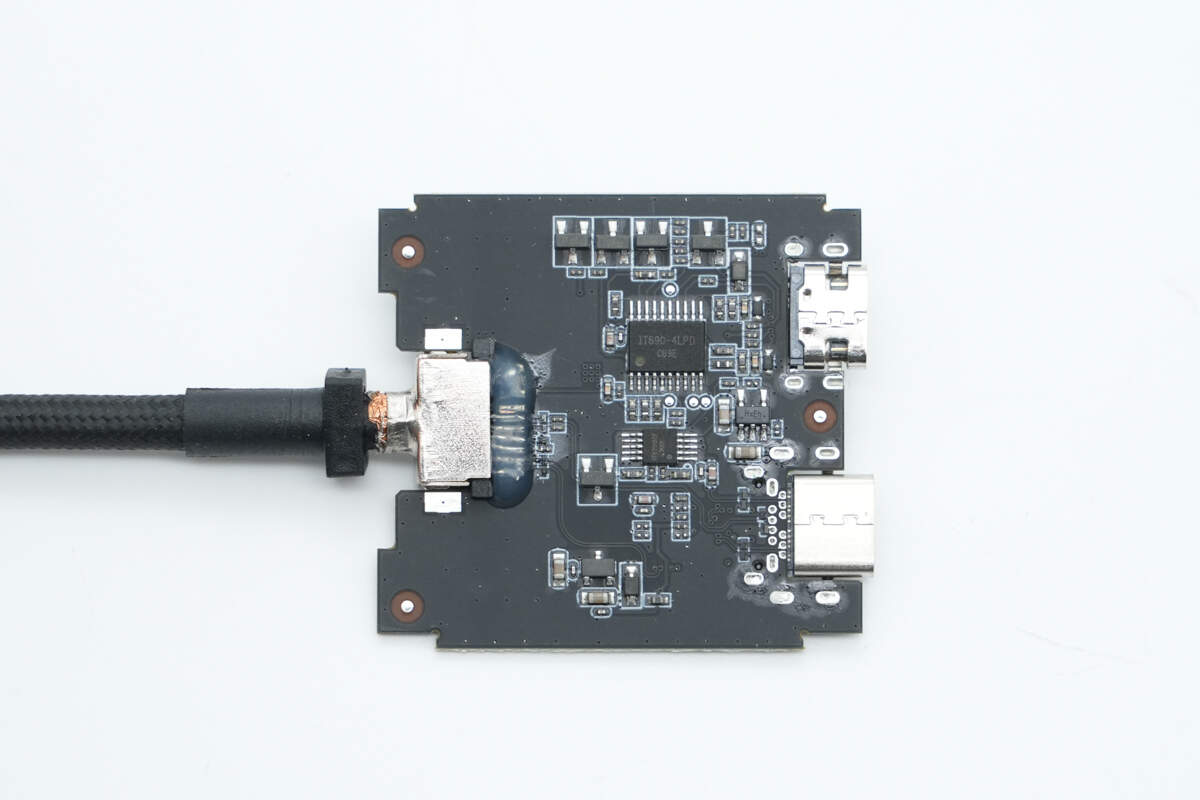
The back side features components, including the ETA ETA6280S2F overcurrent protection chip.

The VBUS MOSFET for the USB-C PD input port is from Vergiga, model VS3508AE. It is a PMOS rated for -30V, with an on-resistance of 8.5mΩ, and comes in a PDFN3333 package.
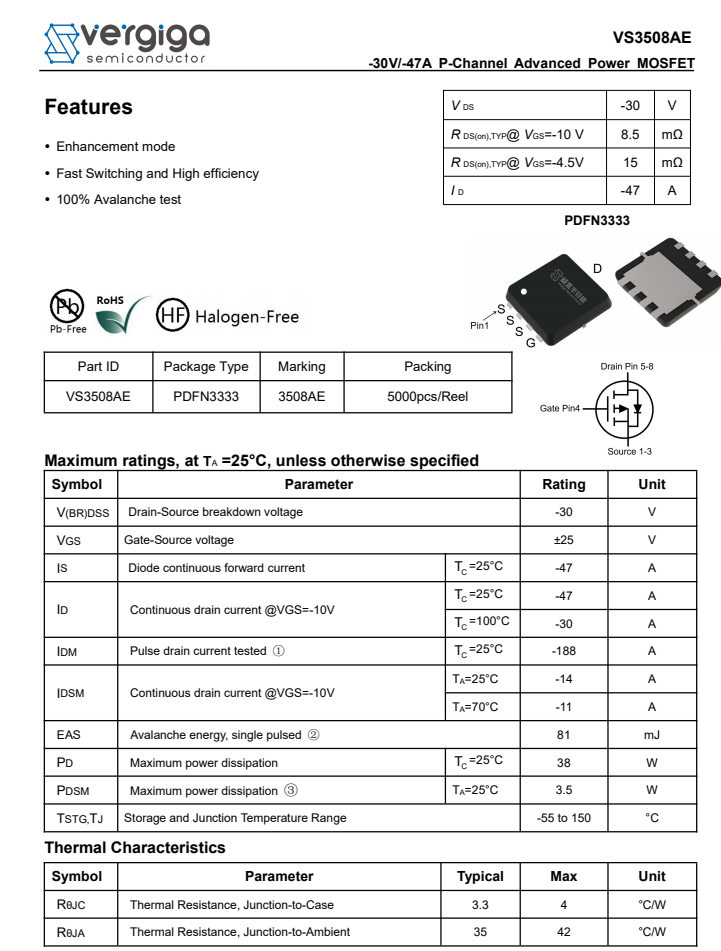
Here is the information about Vergiga VS3508AE.

The synchronous buck converter is from M3TEK, model MT3935A. It supports an input voltage of up to 26V, delivers a continuous output current of 4A, and a peak output current of 5A. It integrates internal MOSFETs and comes in an SOP8-EP package.
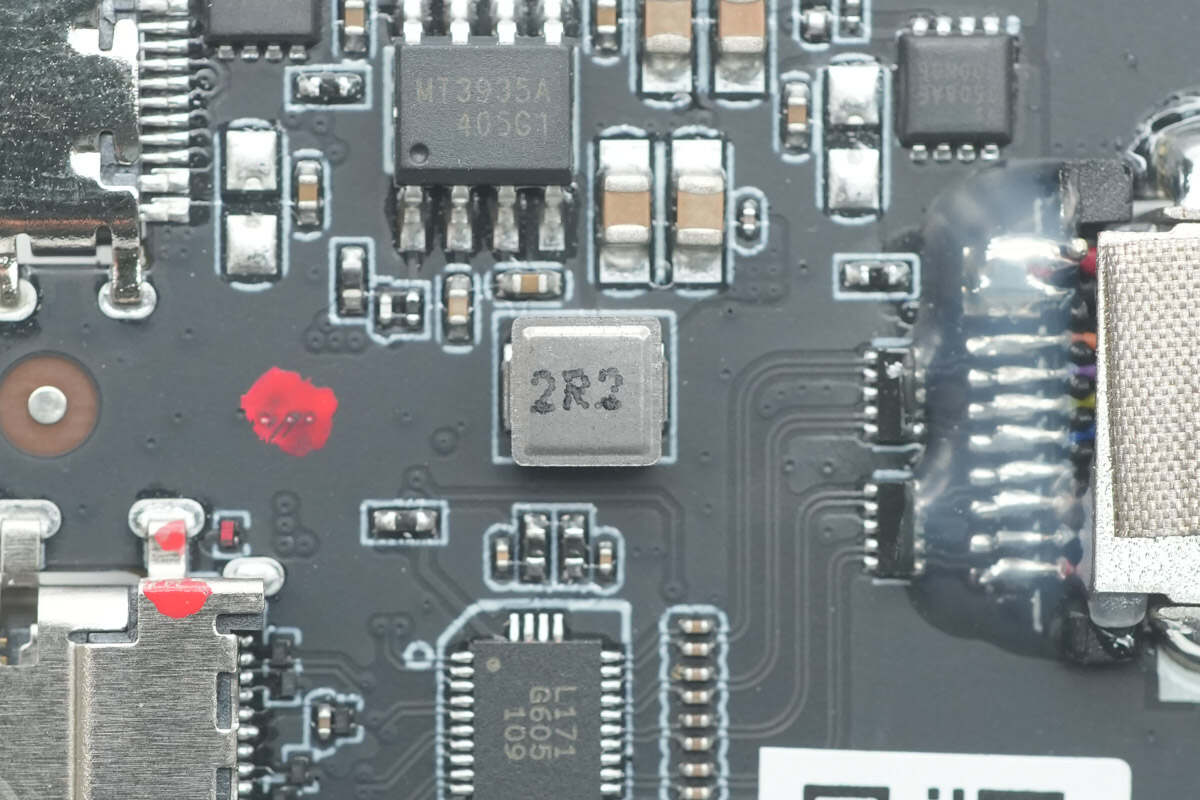
Close-up of the paired 2.2μH buck inductor.
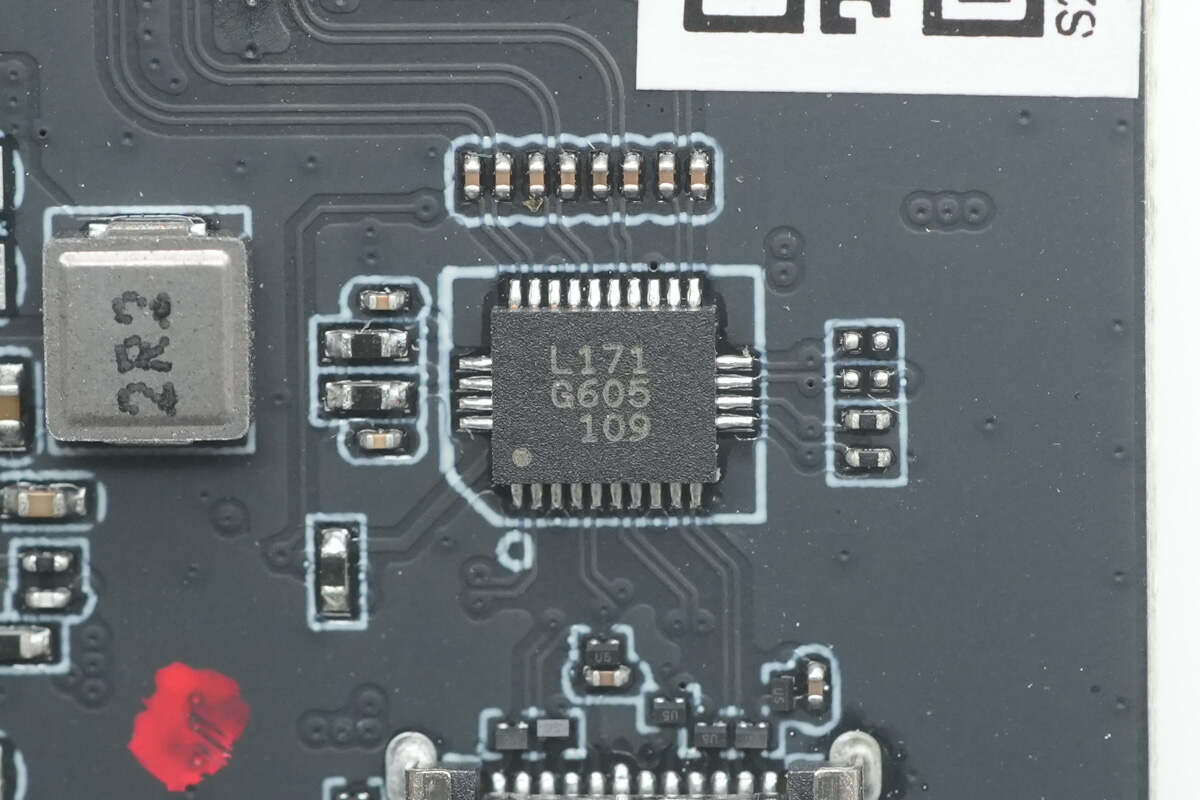
The VIA Labs VL171 is used for USB-C interface de-multiplexing, outputting both DP video signals and USB. It comes in a QFN-28 package.
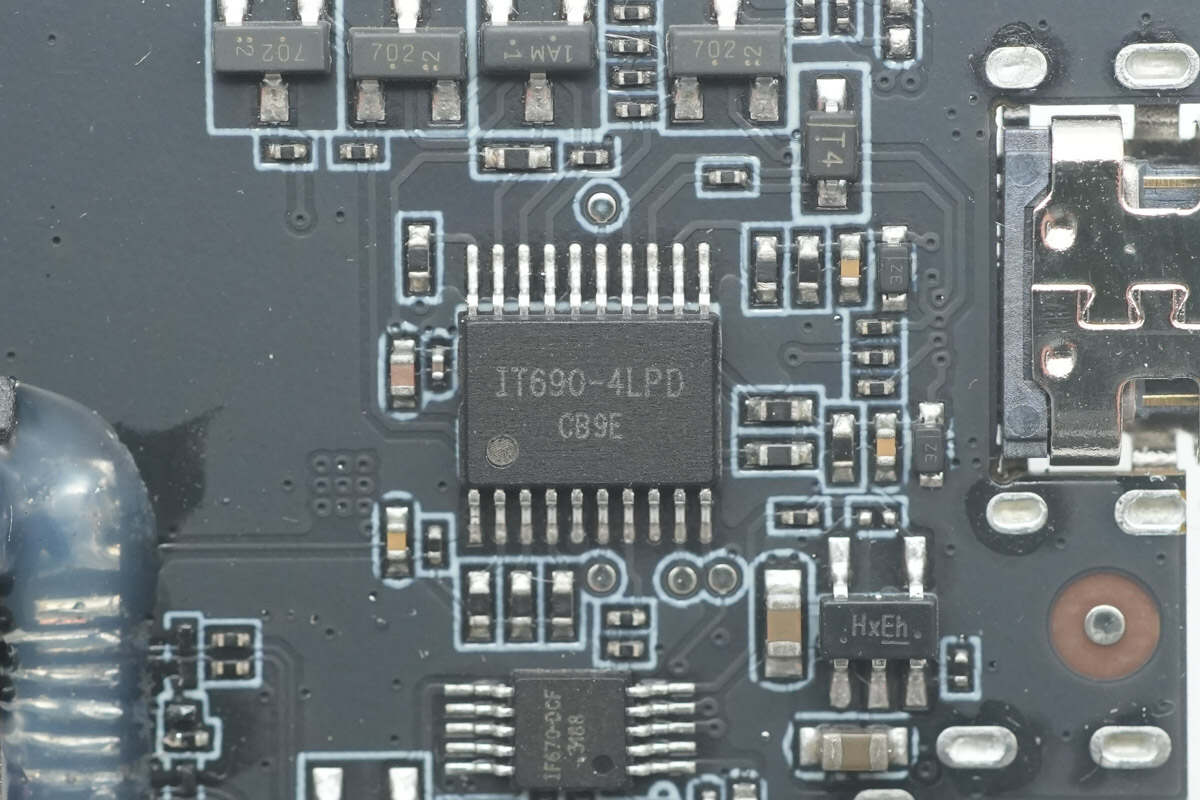
Close-up of a chip marked with "IT690-4LPD".
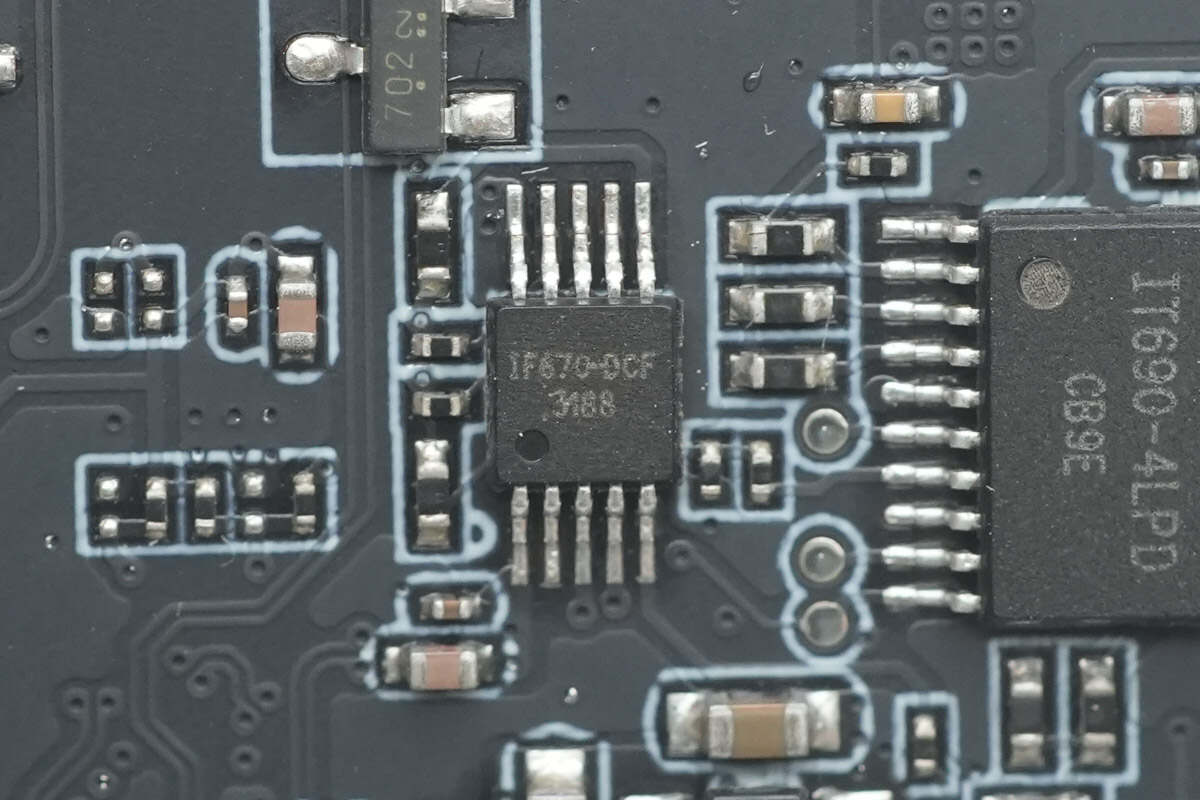
Close-up of a chip marked with "IF670-DCF".
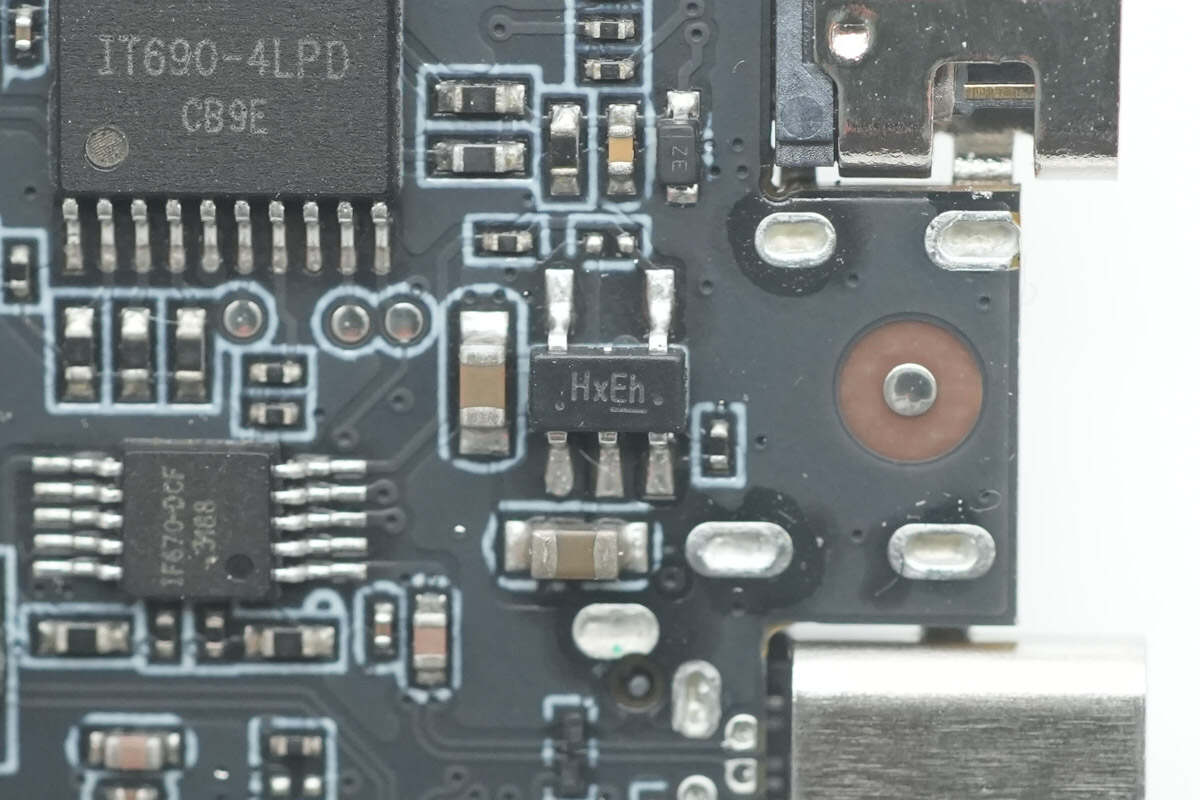
The overcurrent protection chip is from ETA, marked with "Hx," model ETA6280S2F. It supports an input voltage range of 2.1–6V and features 6.1V overvoltage protection. The output current can be set via an external resistor, ranging from 75mA to 2.2A. It offers fast overcurrent response and supports reverse current blocking. The chip is housed in an SOT23-5 package.
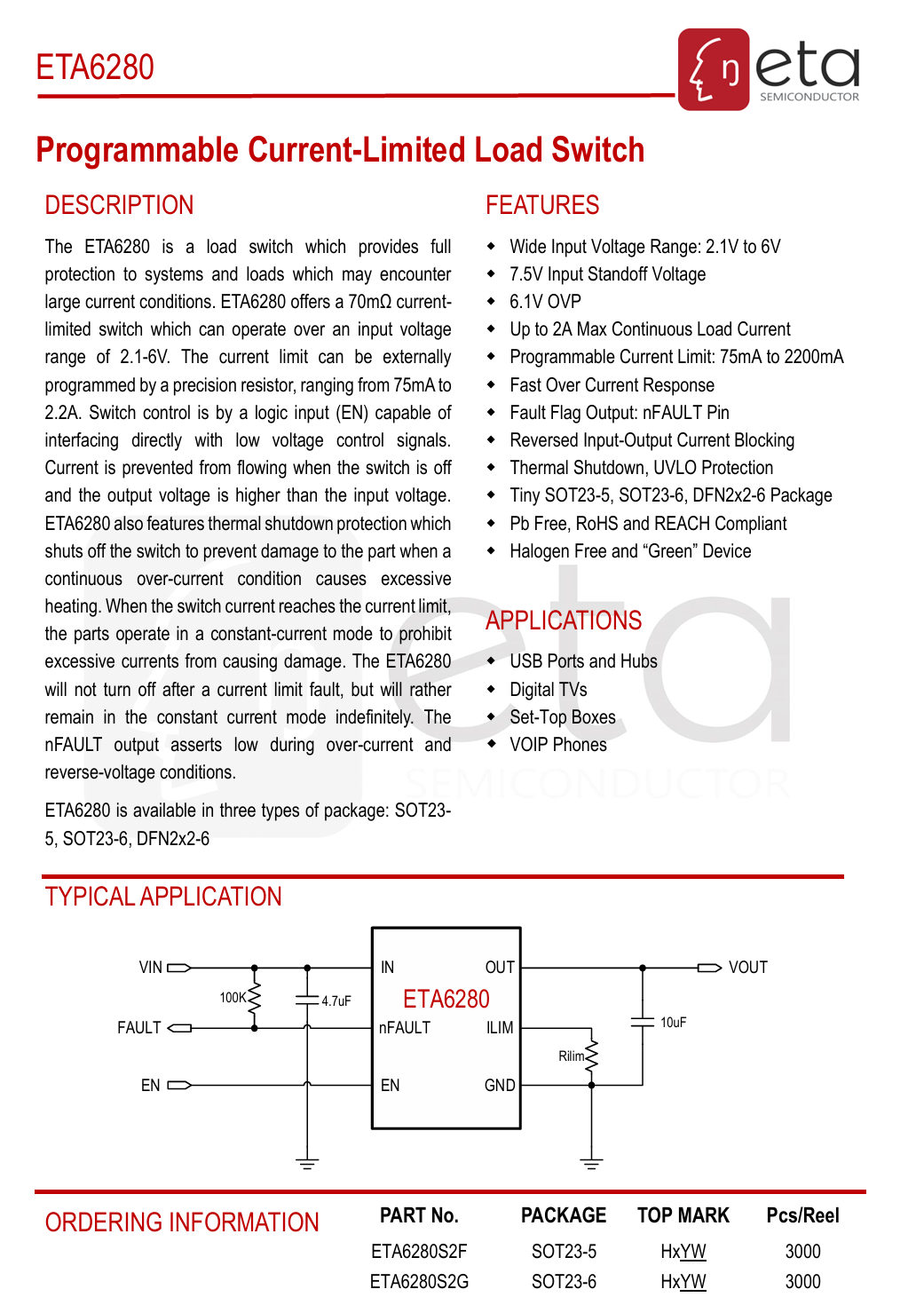
Here is the information about ETA ETA6280.
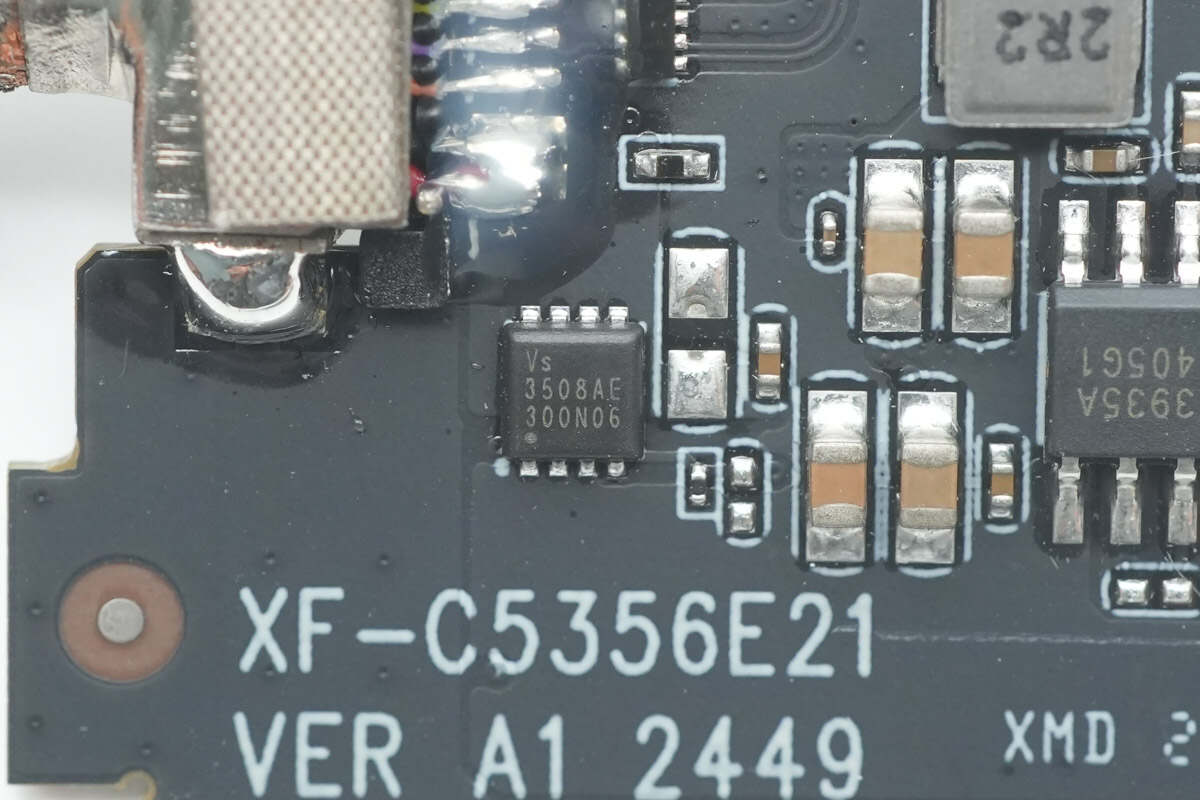
The VBUS MOSFET used for USB-C cable power control is also the Vergiga VS3508AE.
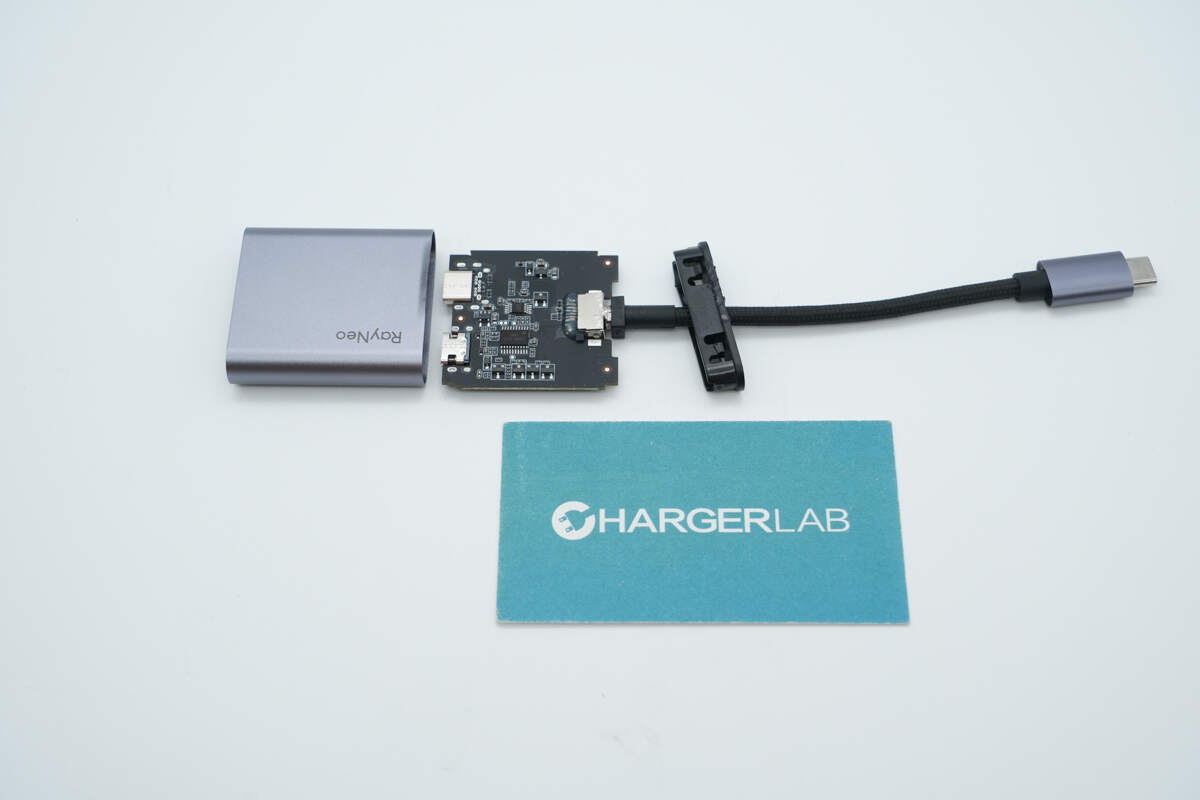
Well, those are all components of the RayNeo Air 3s Pro Original USB-C Adapter.
Summary of ChargerLAB

Here is the component list of the RayNeo Air 3s Pro Original USB-C Adapter for your convenience.
It is specially designed for the long-duration usage scenarios of the RayNeo Air 3s Pro AR glasses, supporting 100W PD input. The 4K60Hz video transmission port meets the demands of video transfer. The USB-C cable is made of braided material, and both the connectors and the body feature a metal casing. In terms of both design and performance, it is perfectly matched to the RayNeo Air 3s Pro.
After taking it apart, we found that it employs the M3TEK MT3935A synchronous buck converter, the VIA Labs VL171 multiplexer switch, as well as the ETA ETA6280S2F overcurrent protection chip and Vergiga VS3508AE VBUS MOSFETs. The components used are reliable and of high quality.
Related Articles:
1. Teardown of Xiaomi Mijia Sonic Sweep Electric Toothbrush (MES611)
2. Teardown of GreatWall 2200W 80 PLUS Platinum Server Power Supply (CRPS2200DLW)
3. Teardown of EMERSON 1725W AC Power Supply (7001490-J000)

